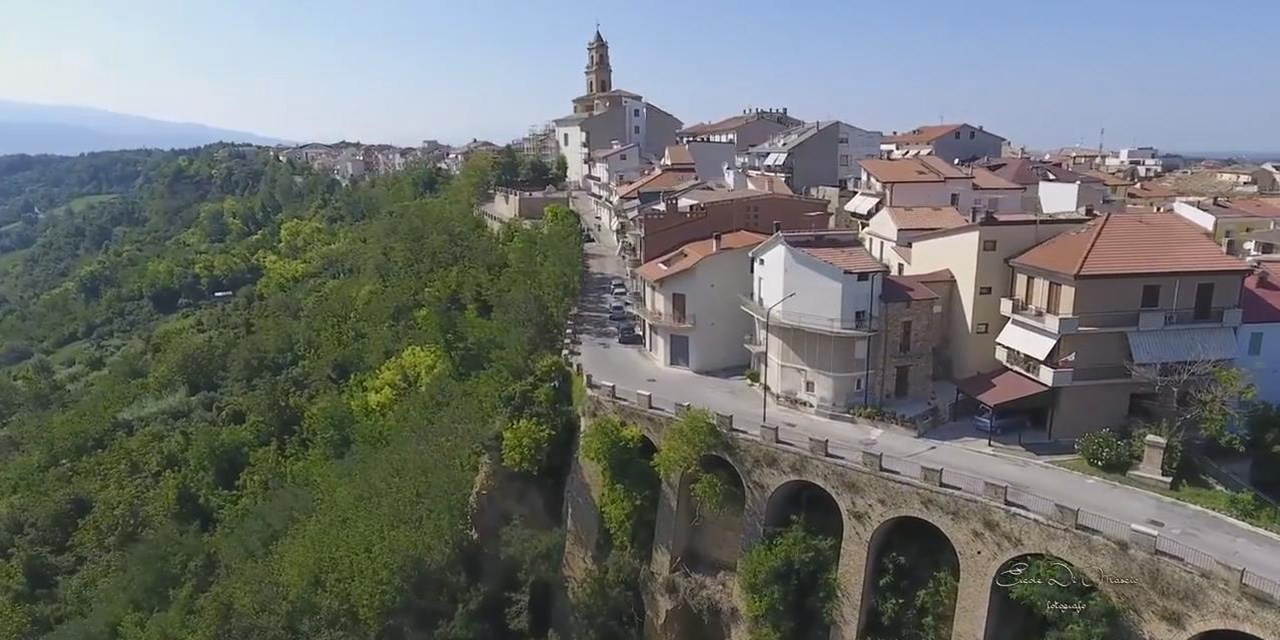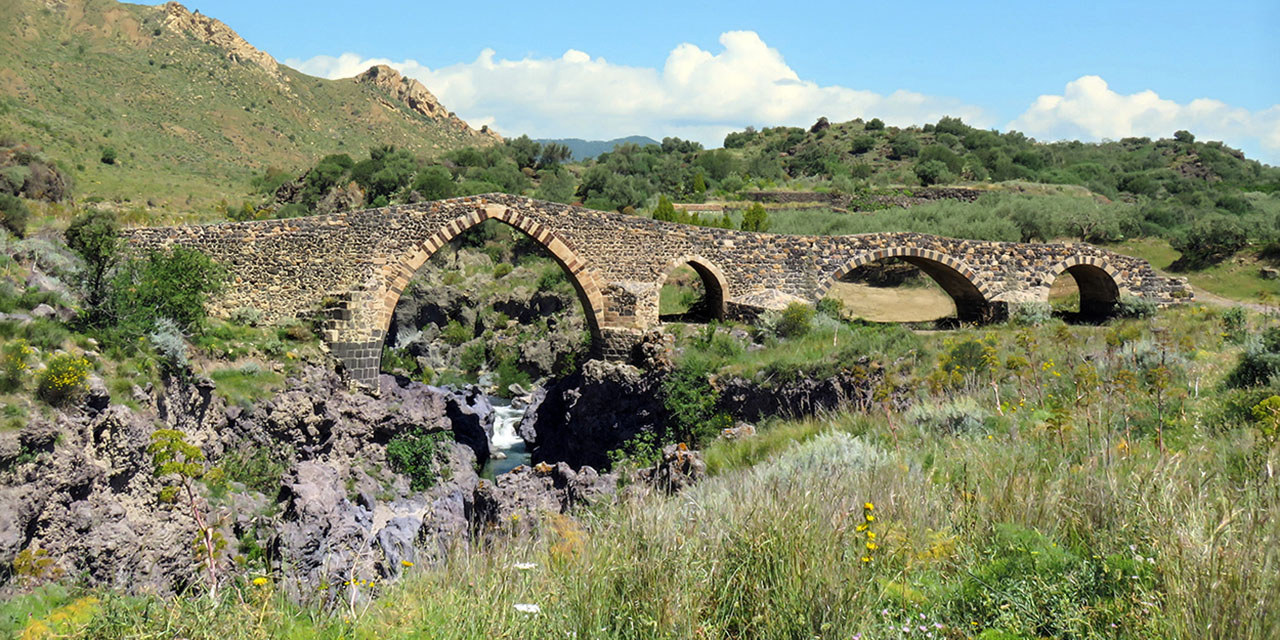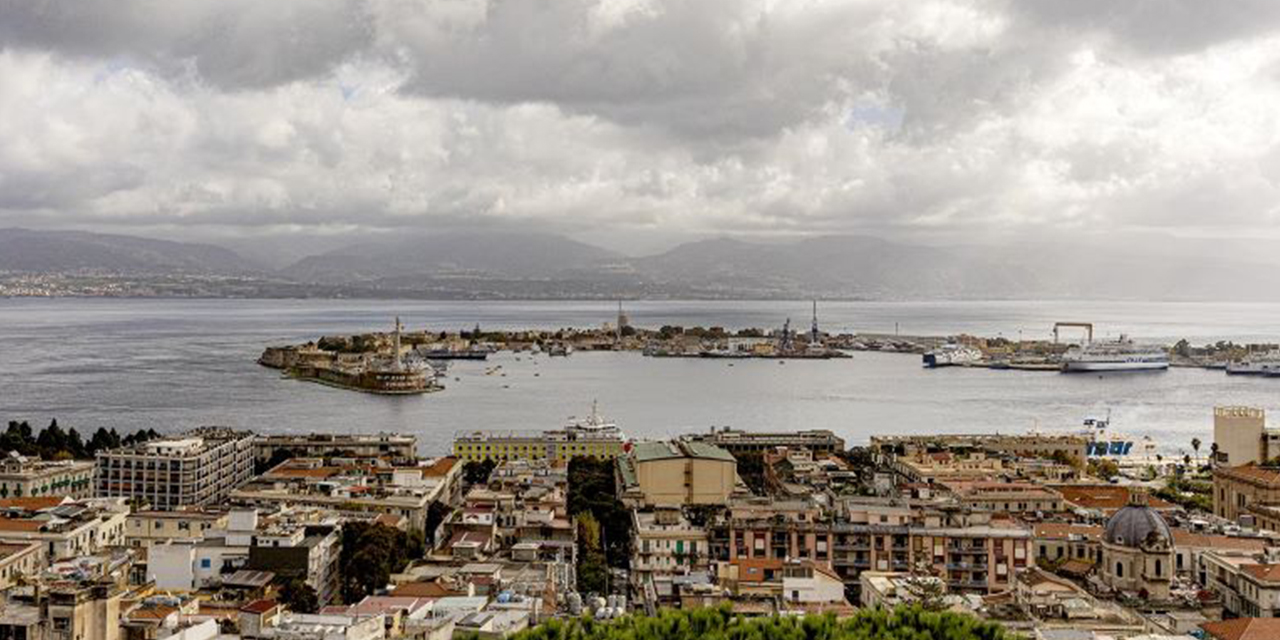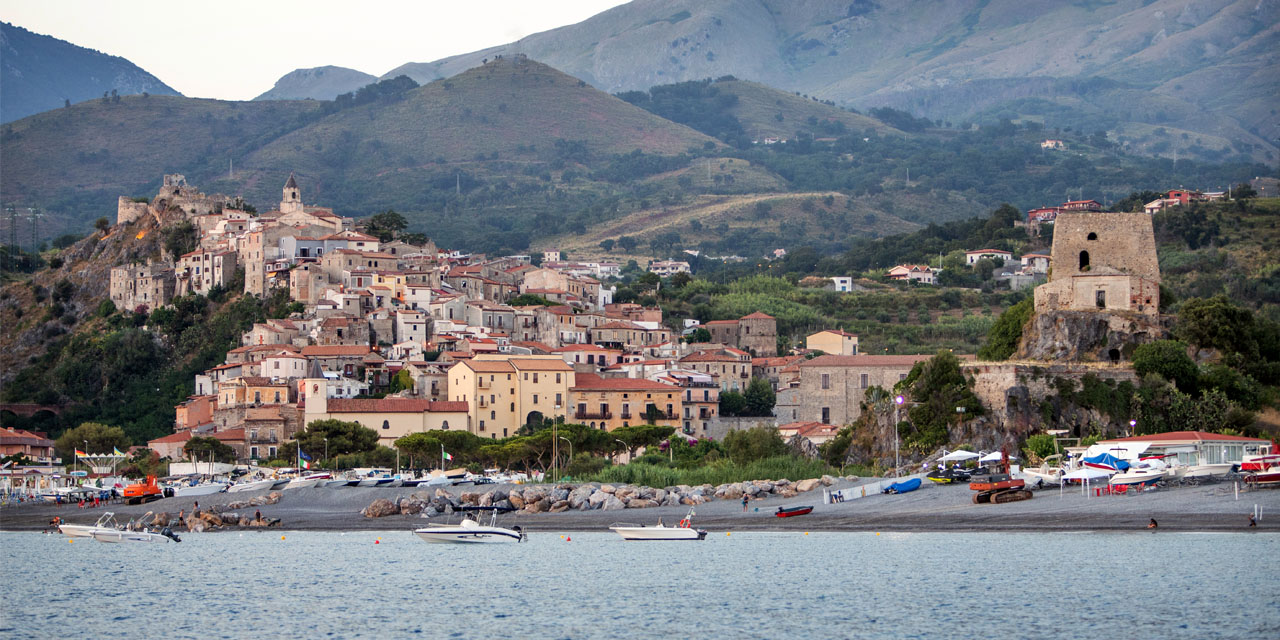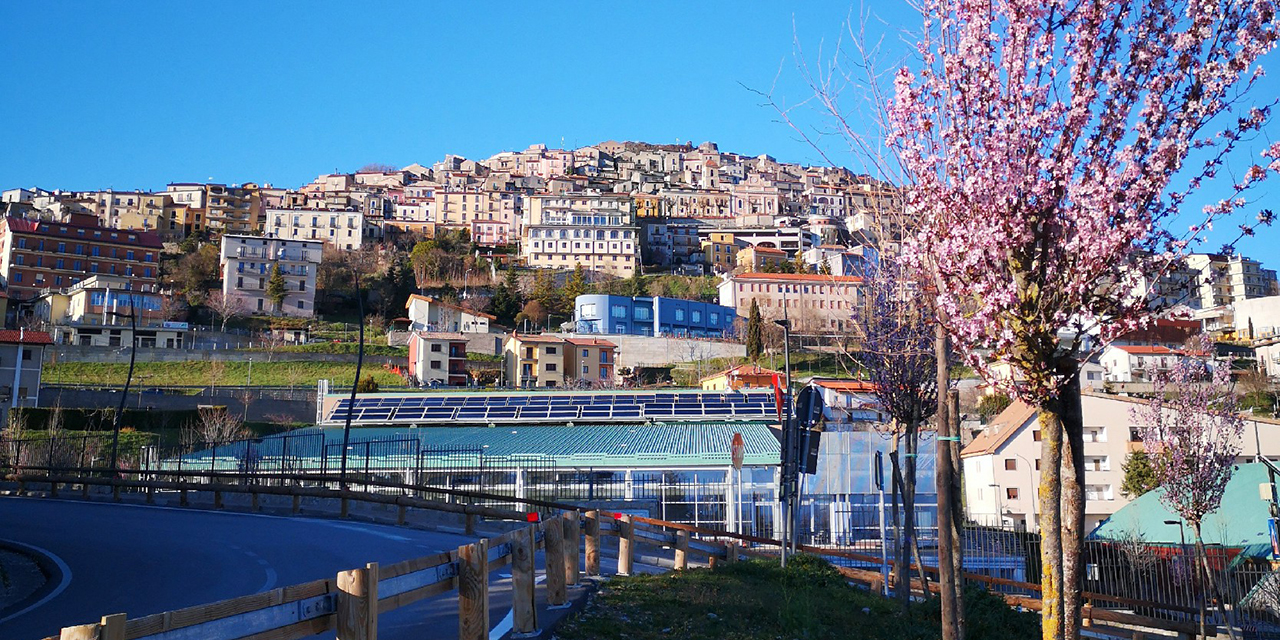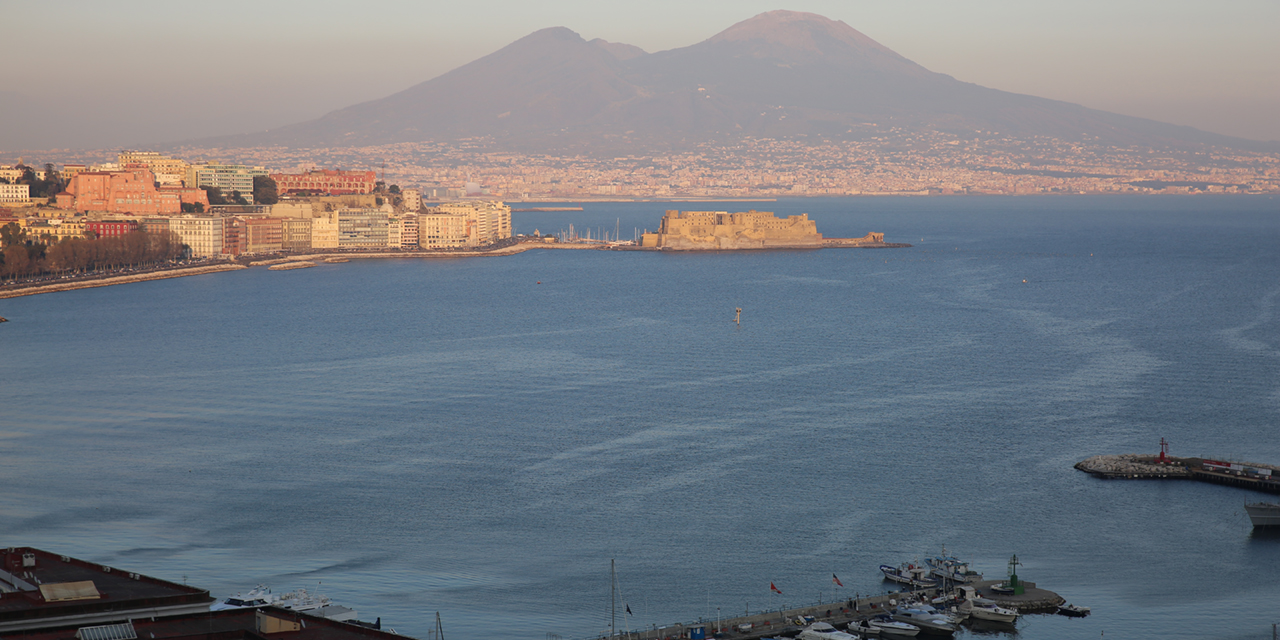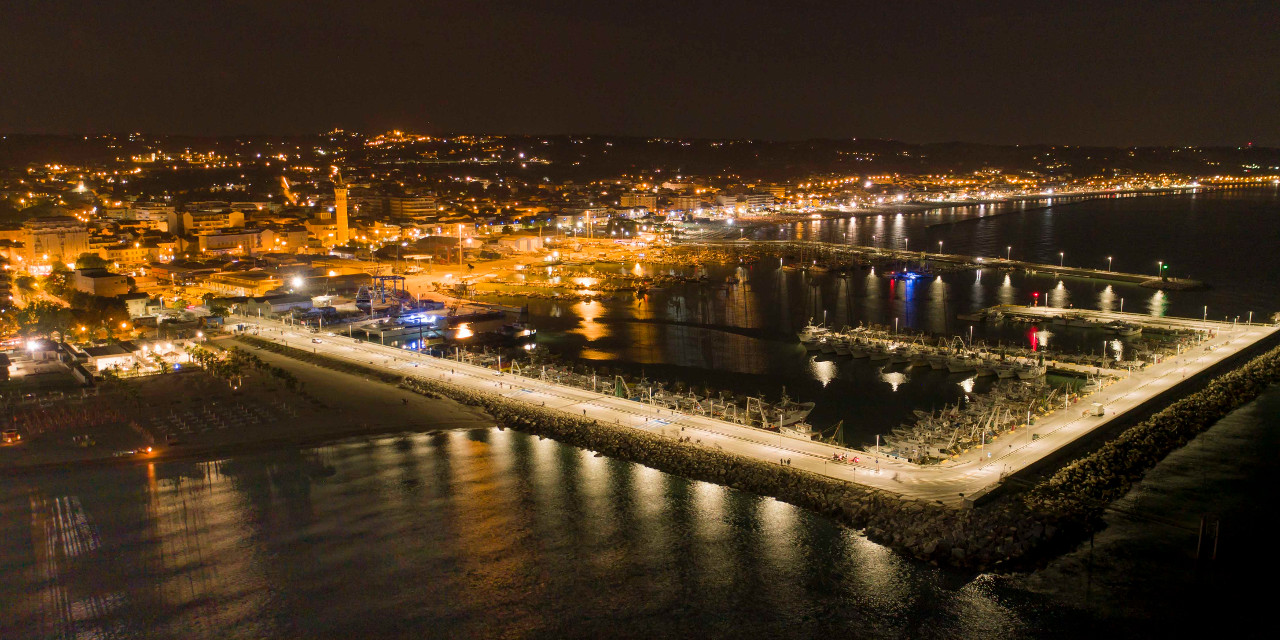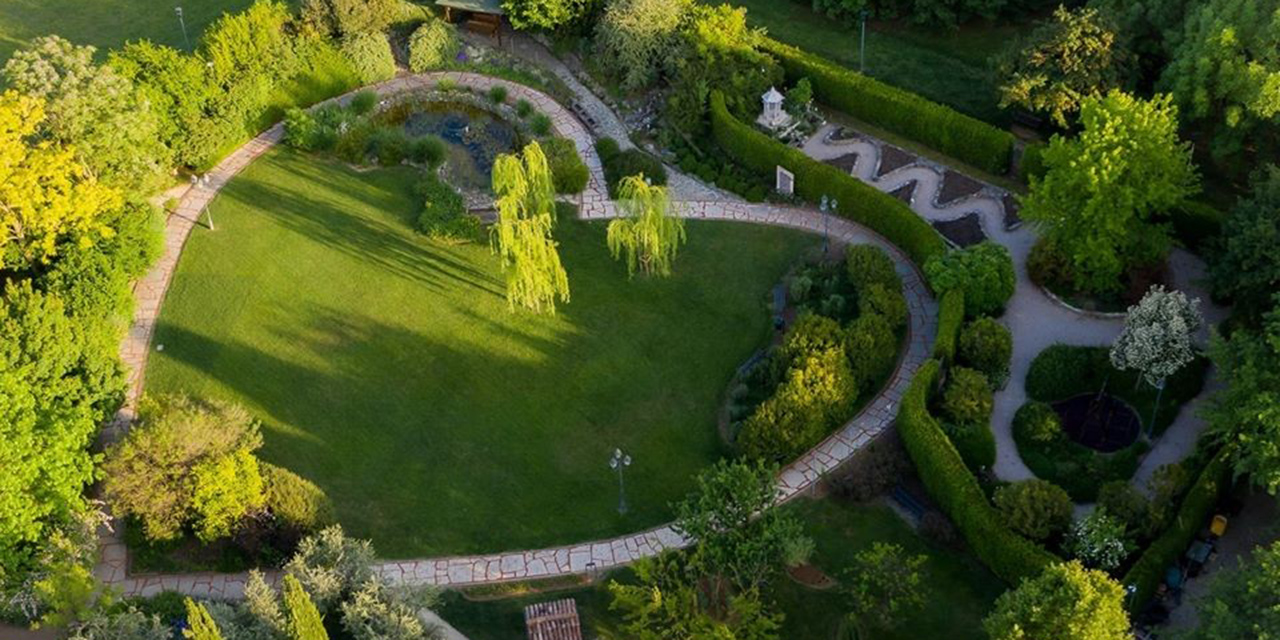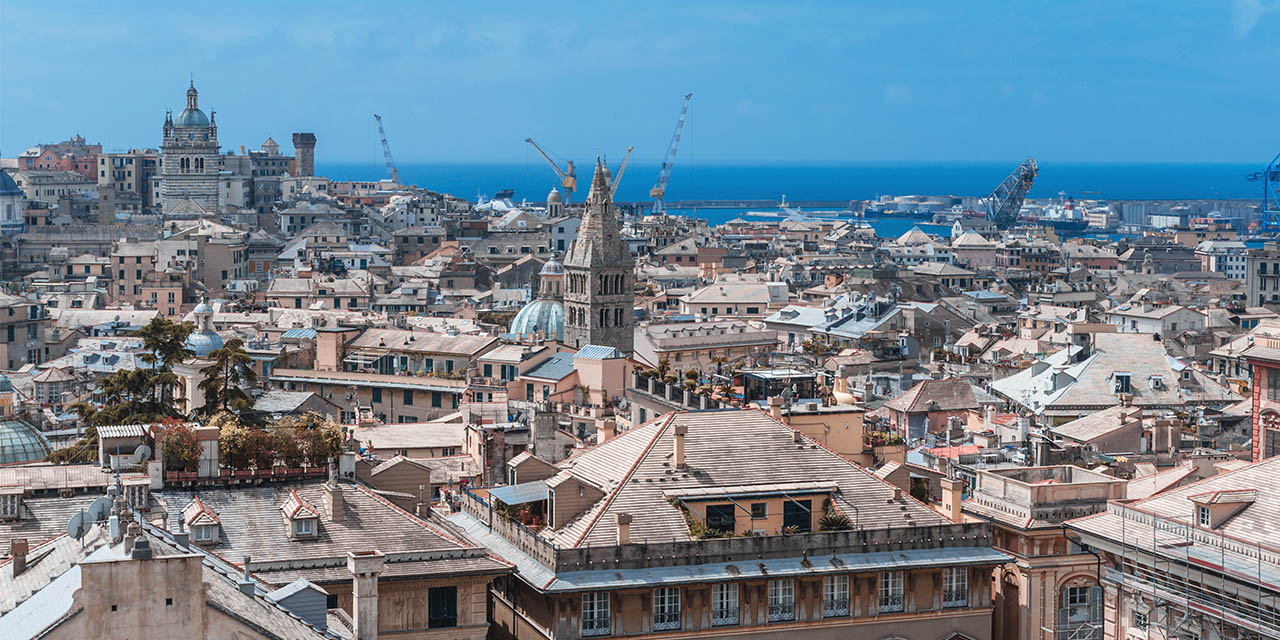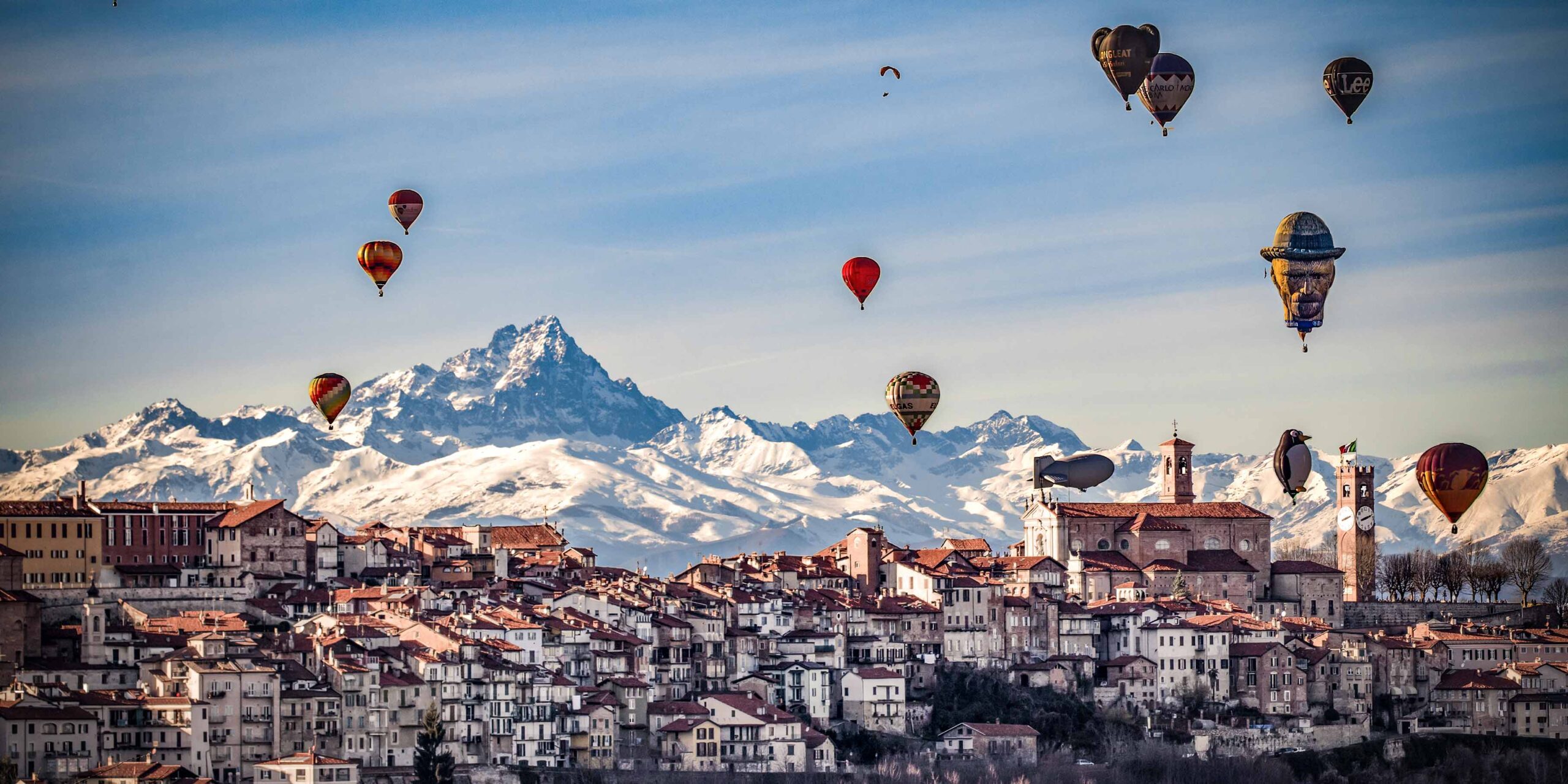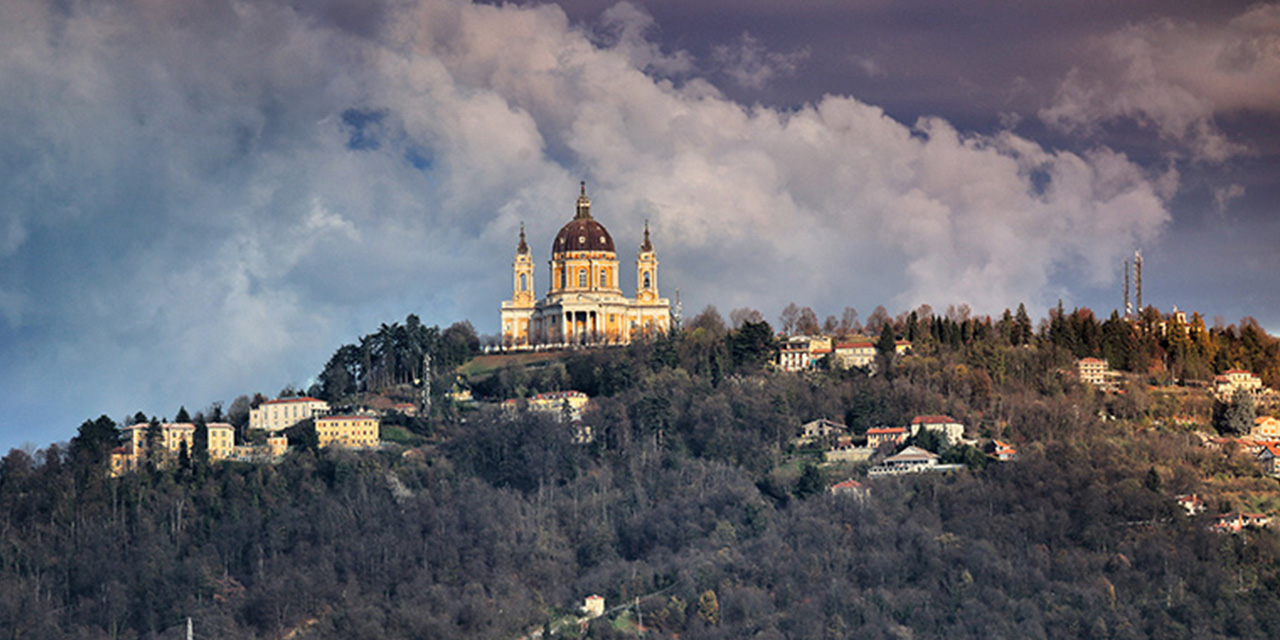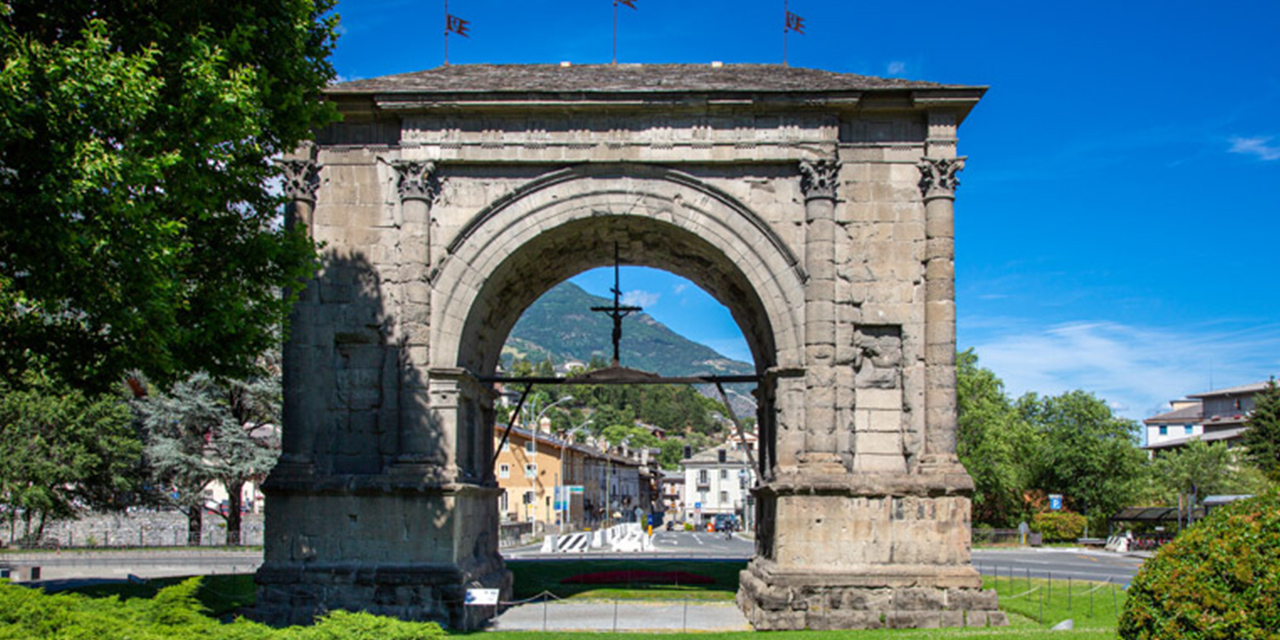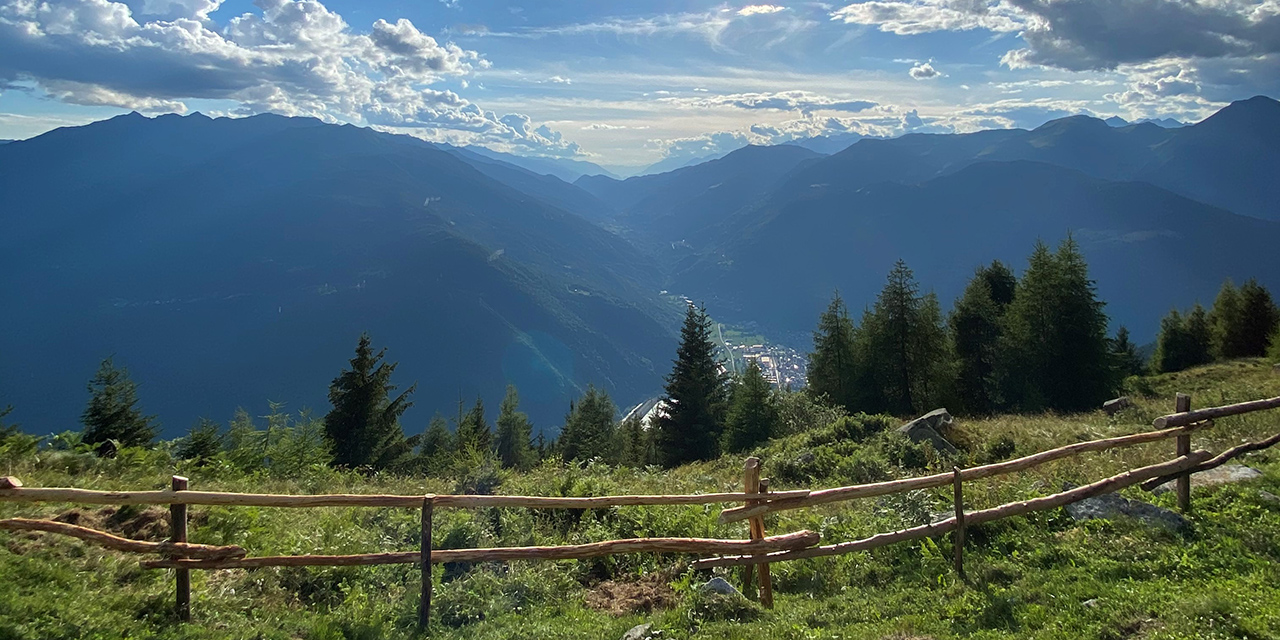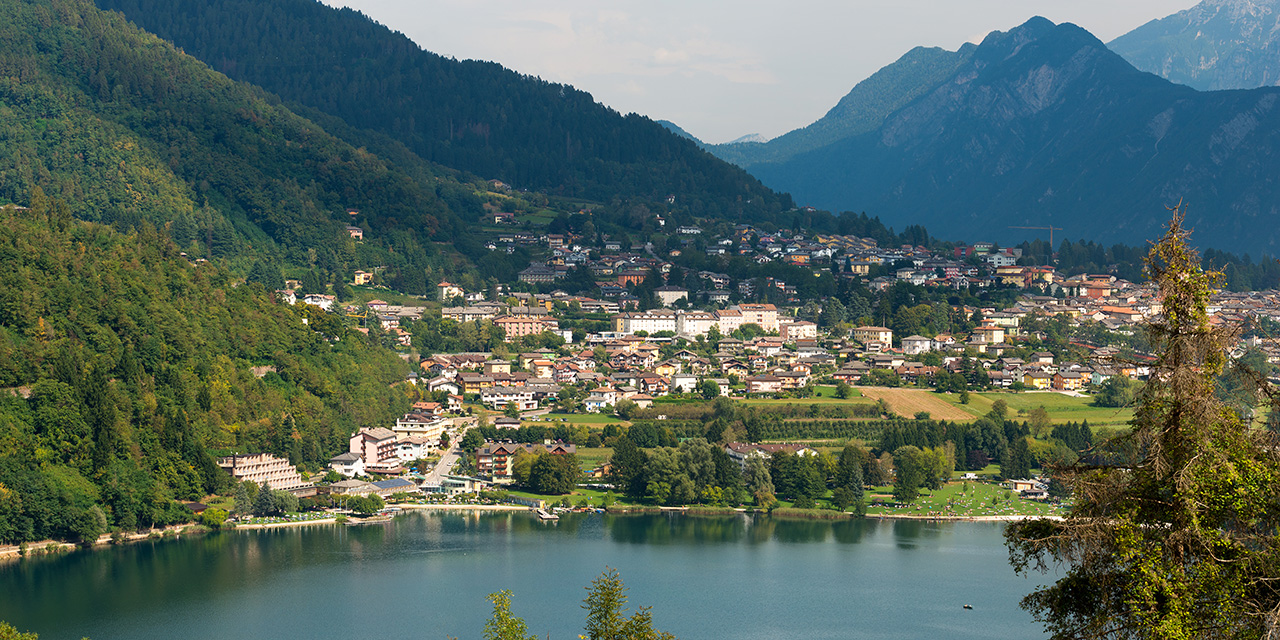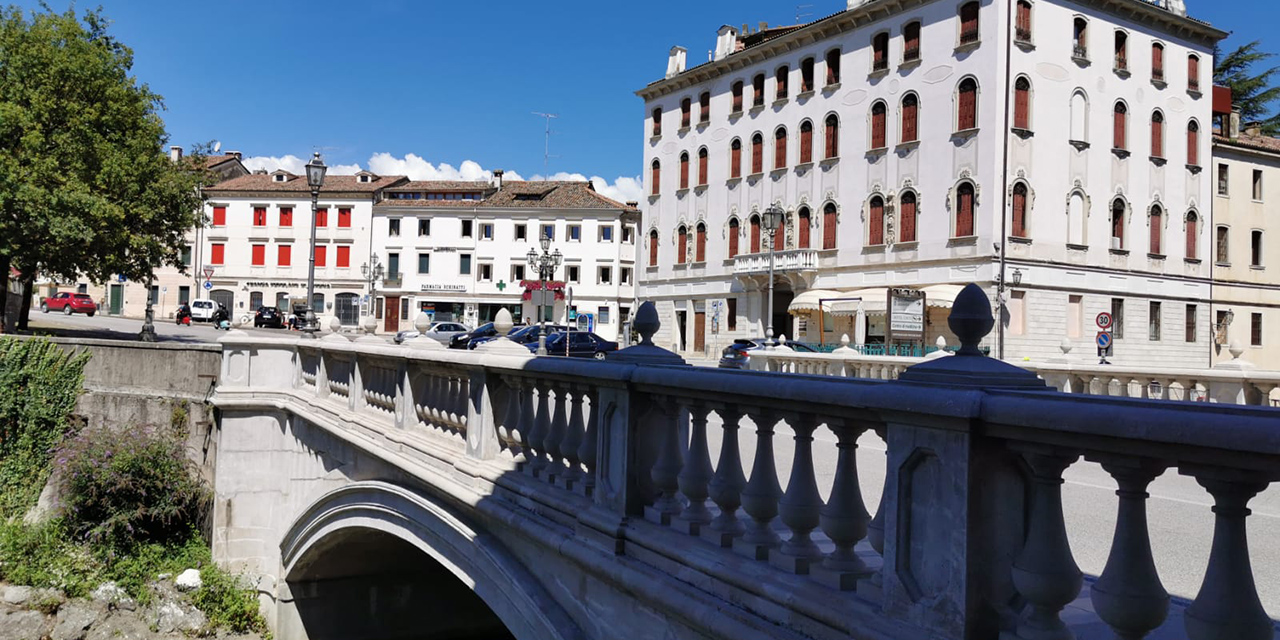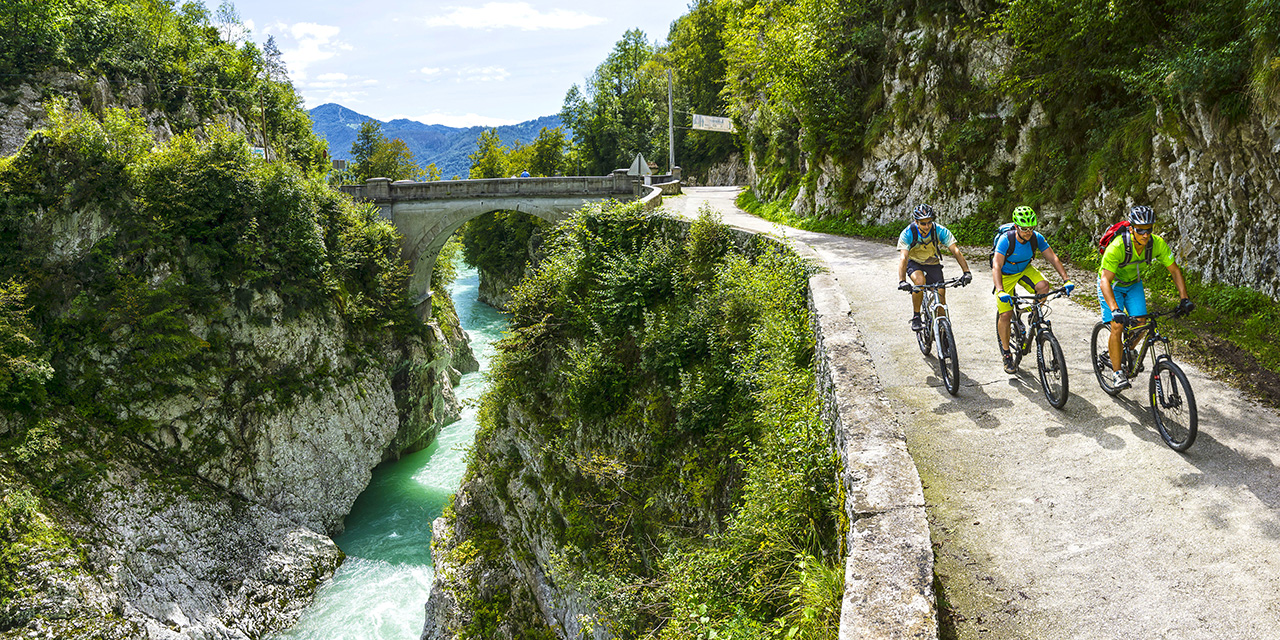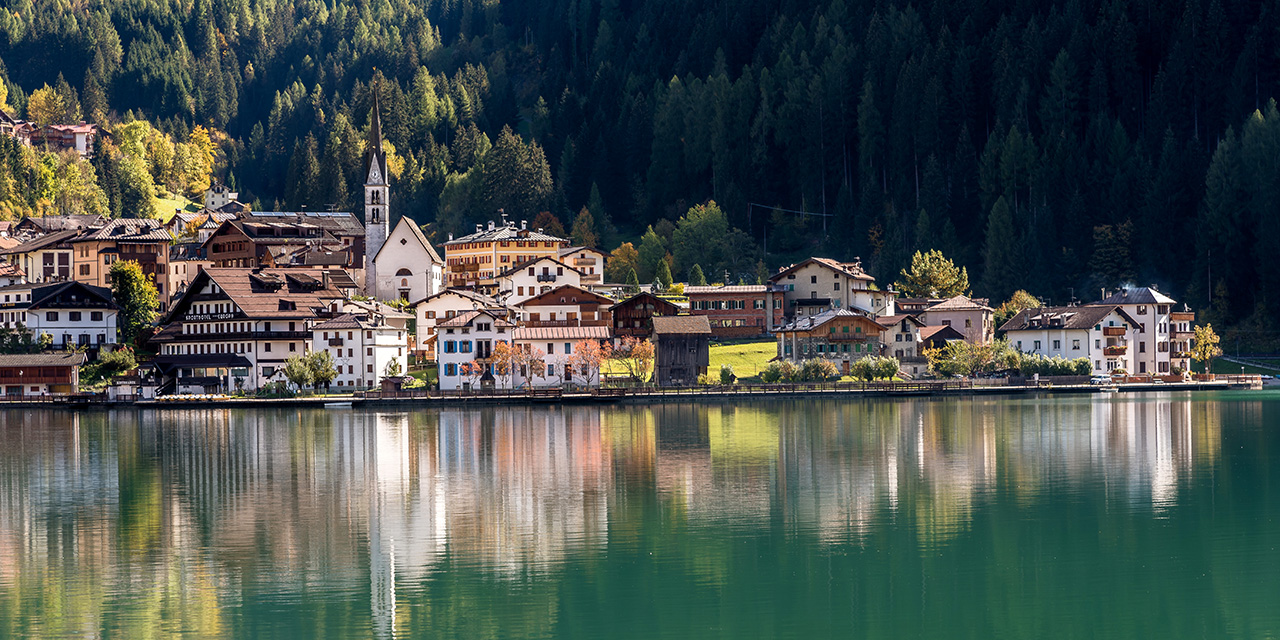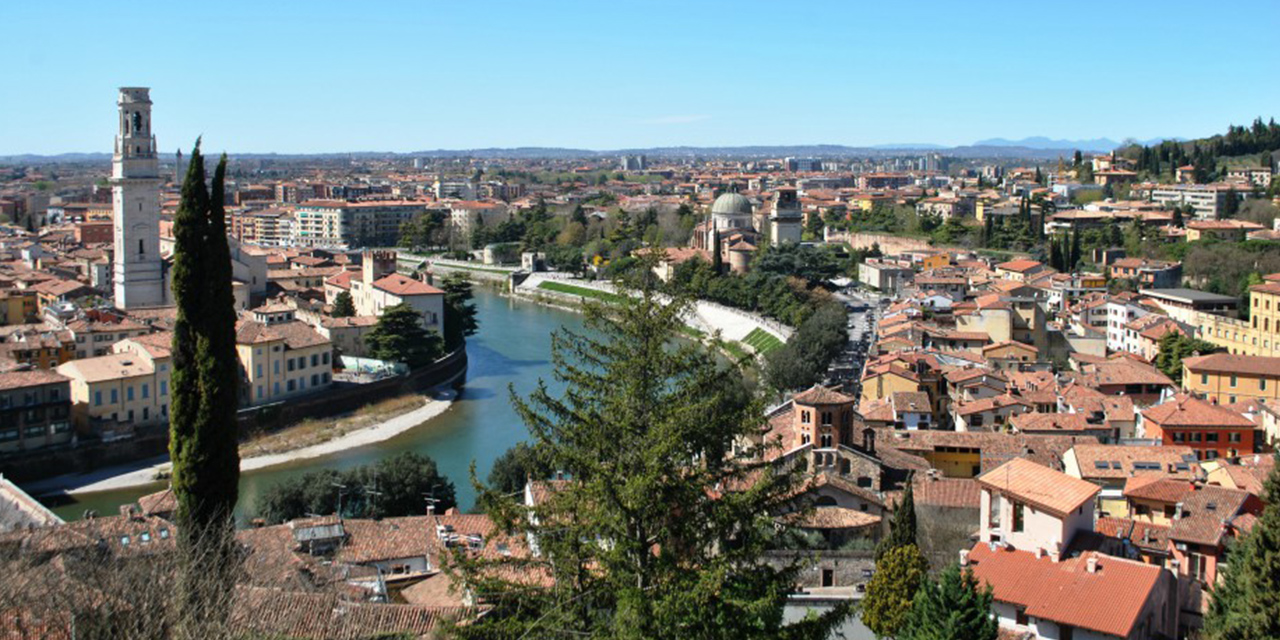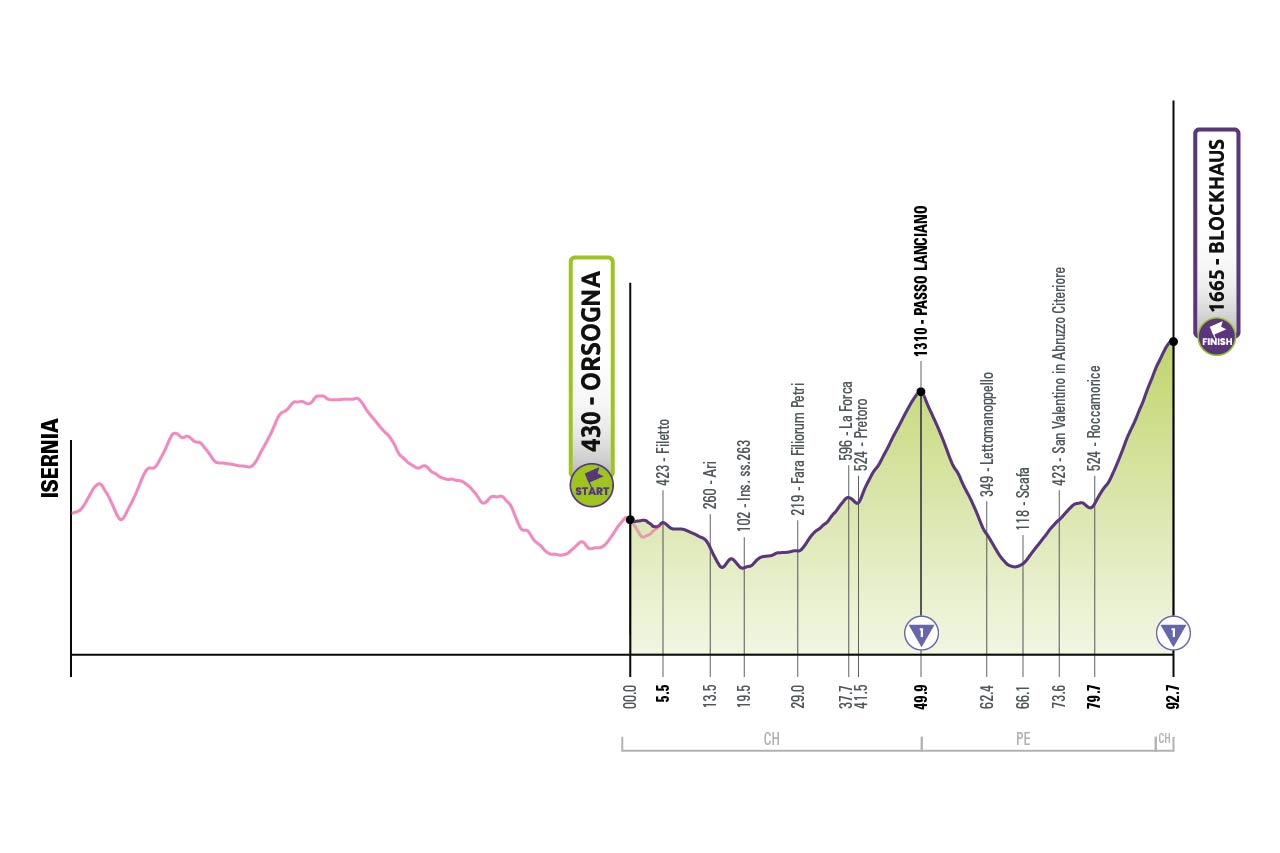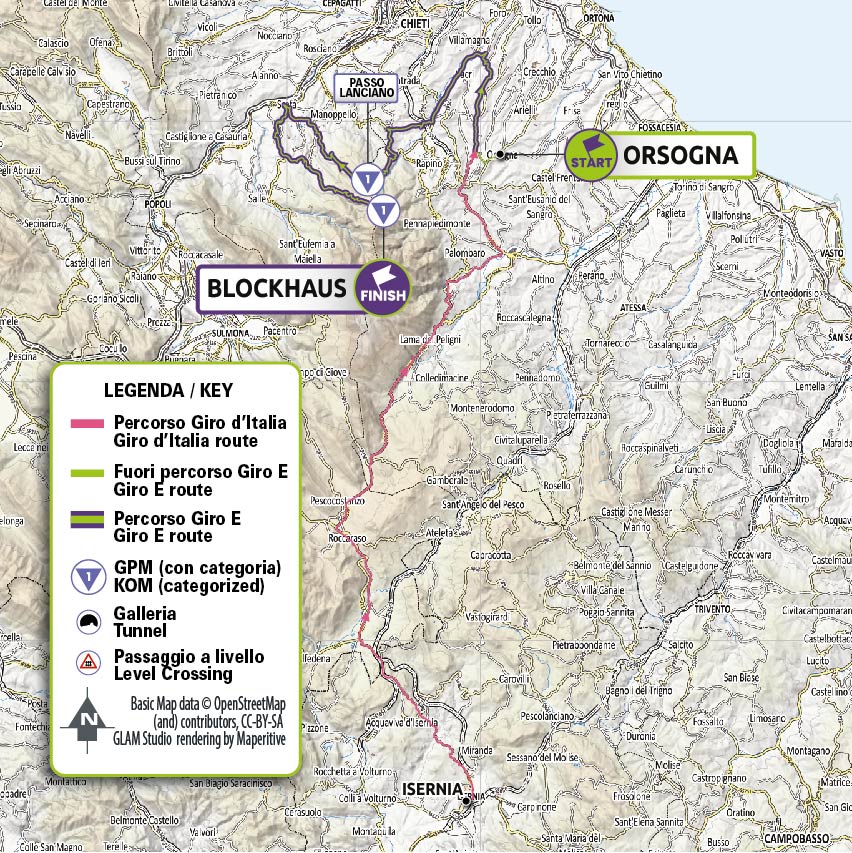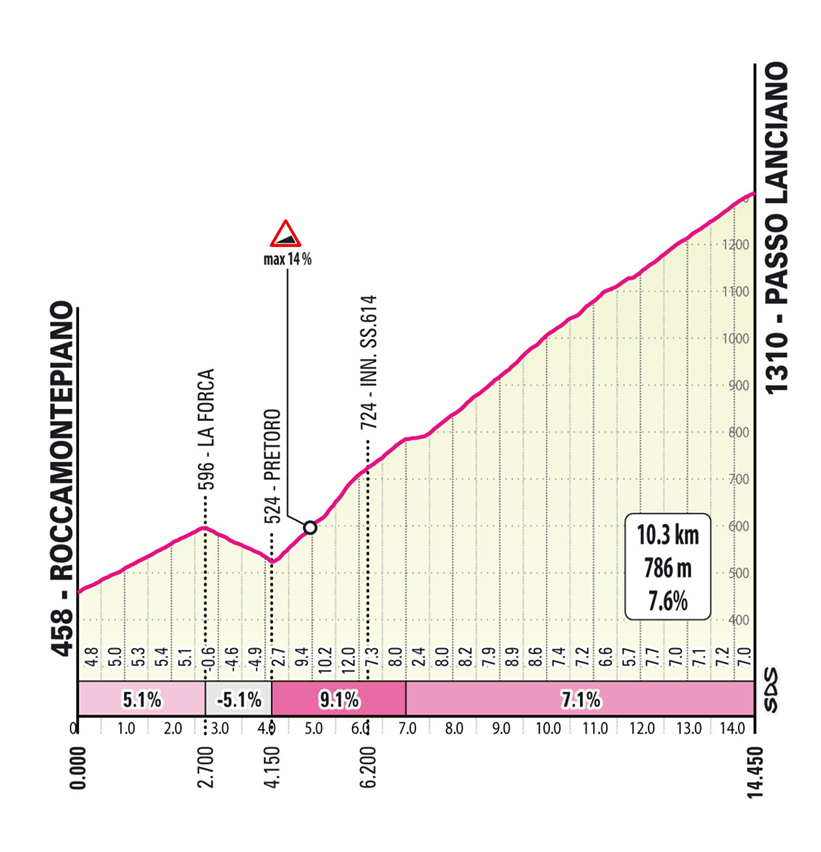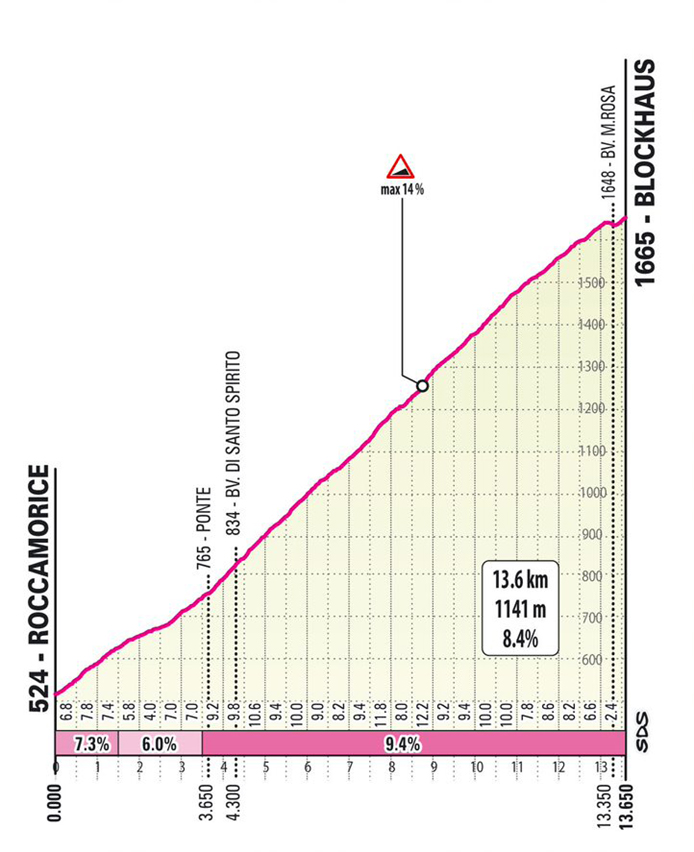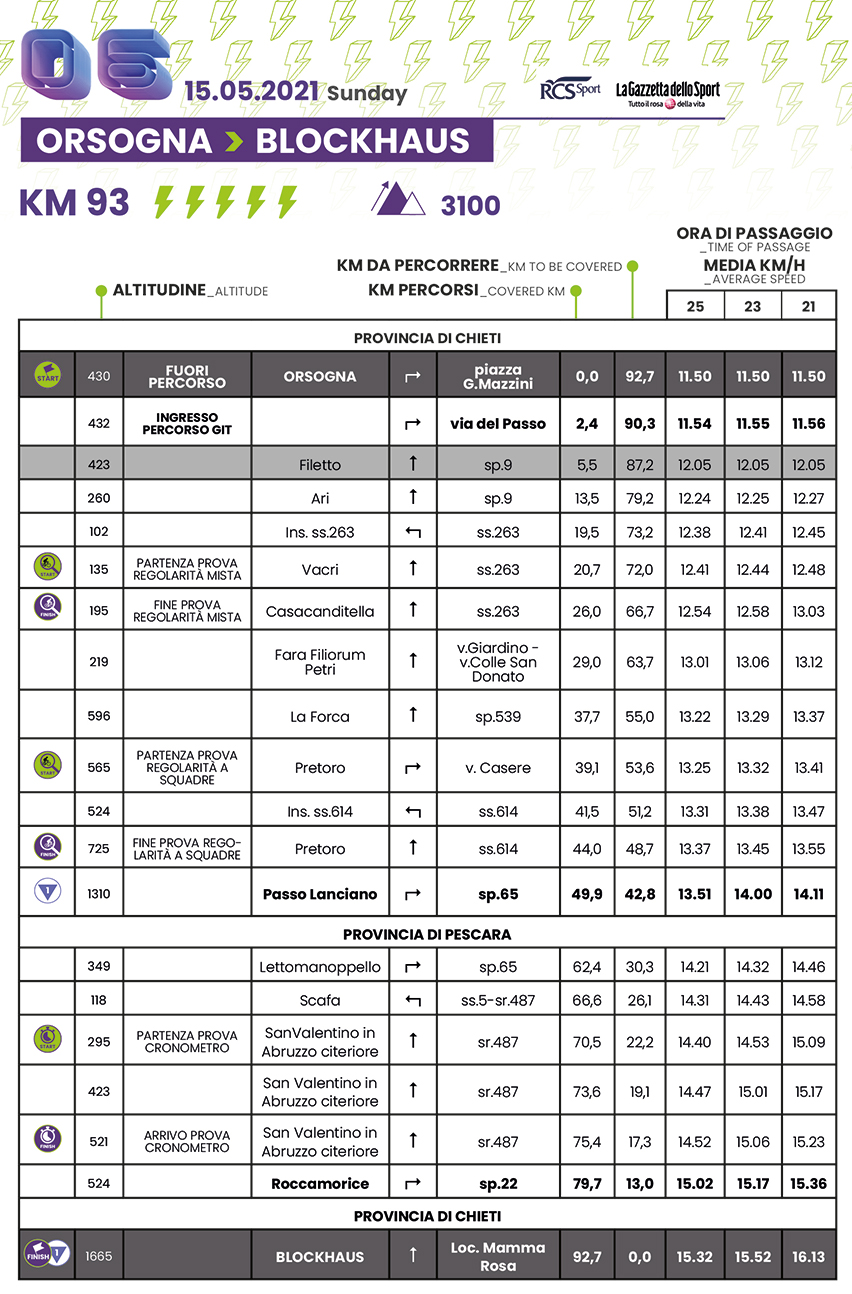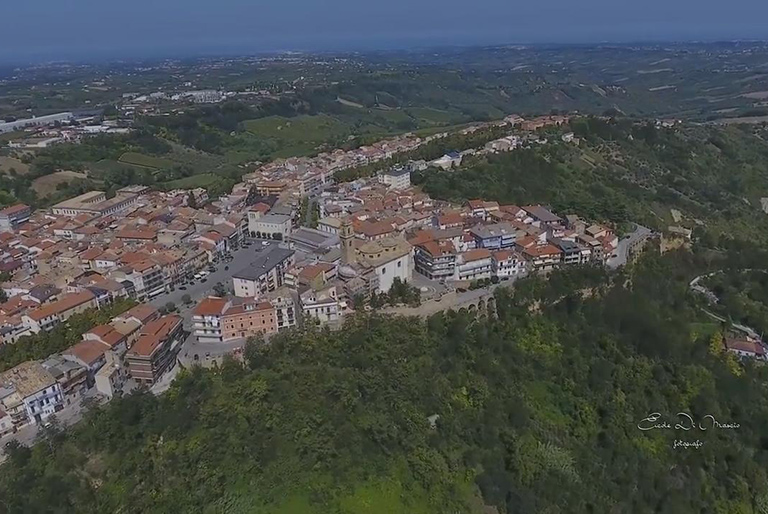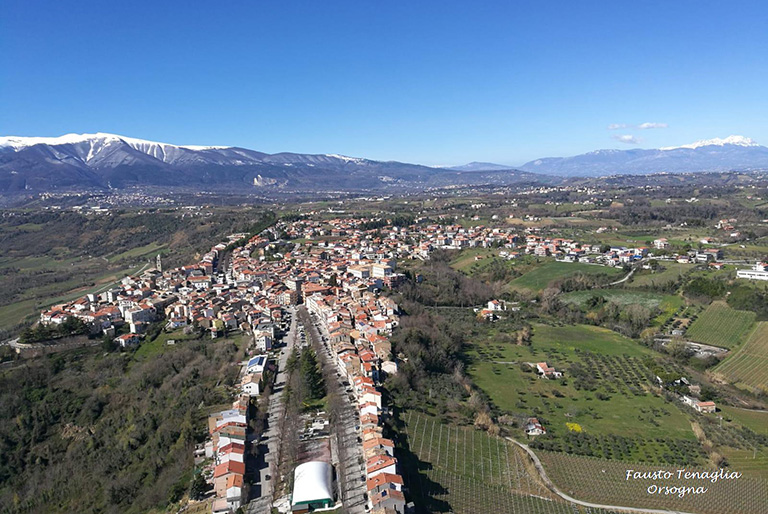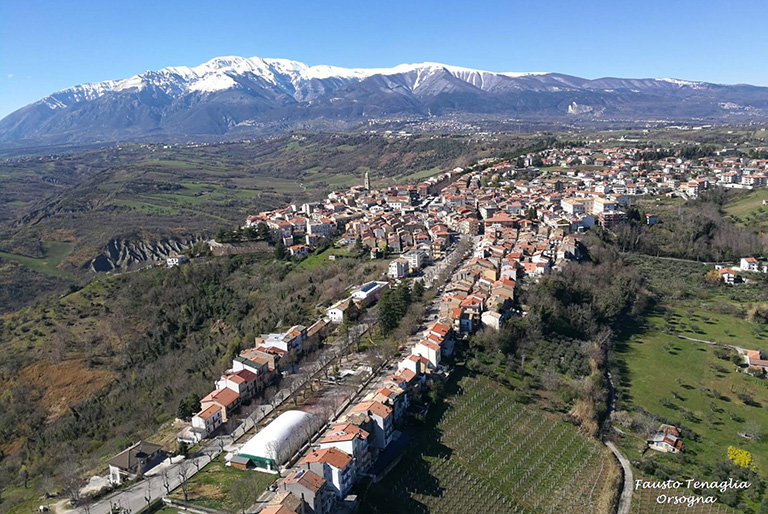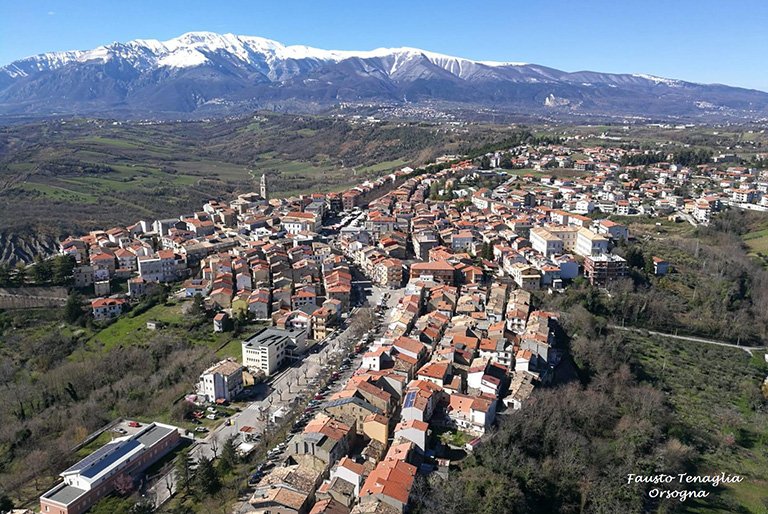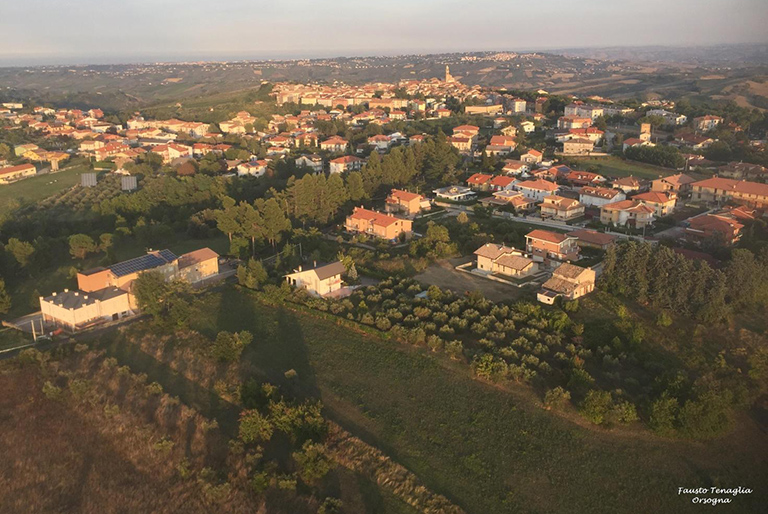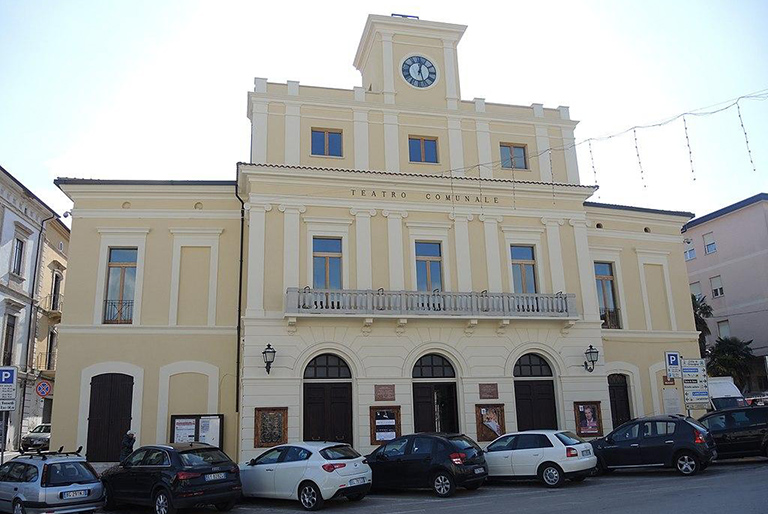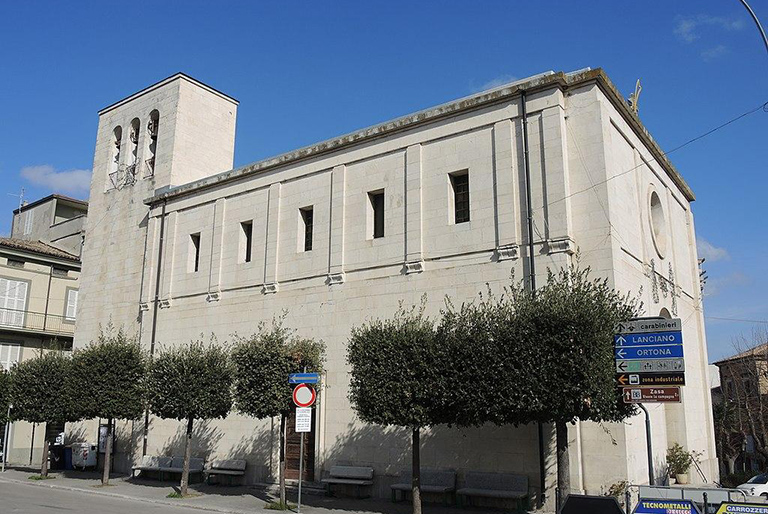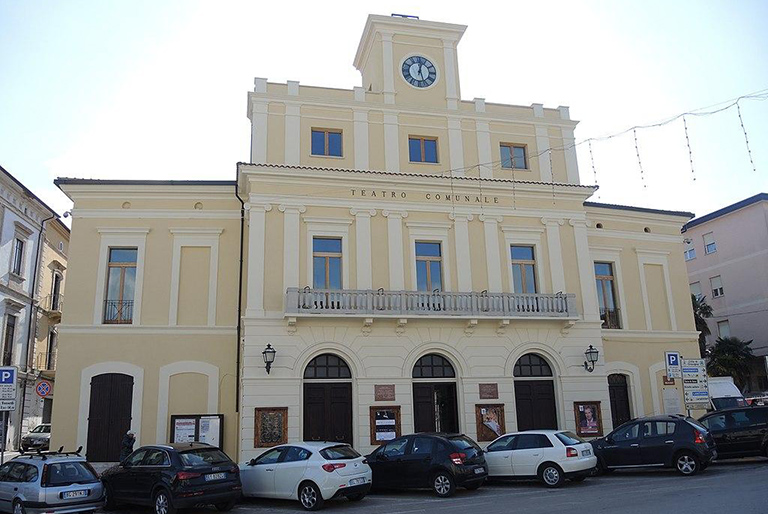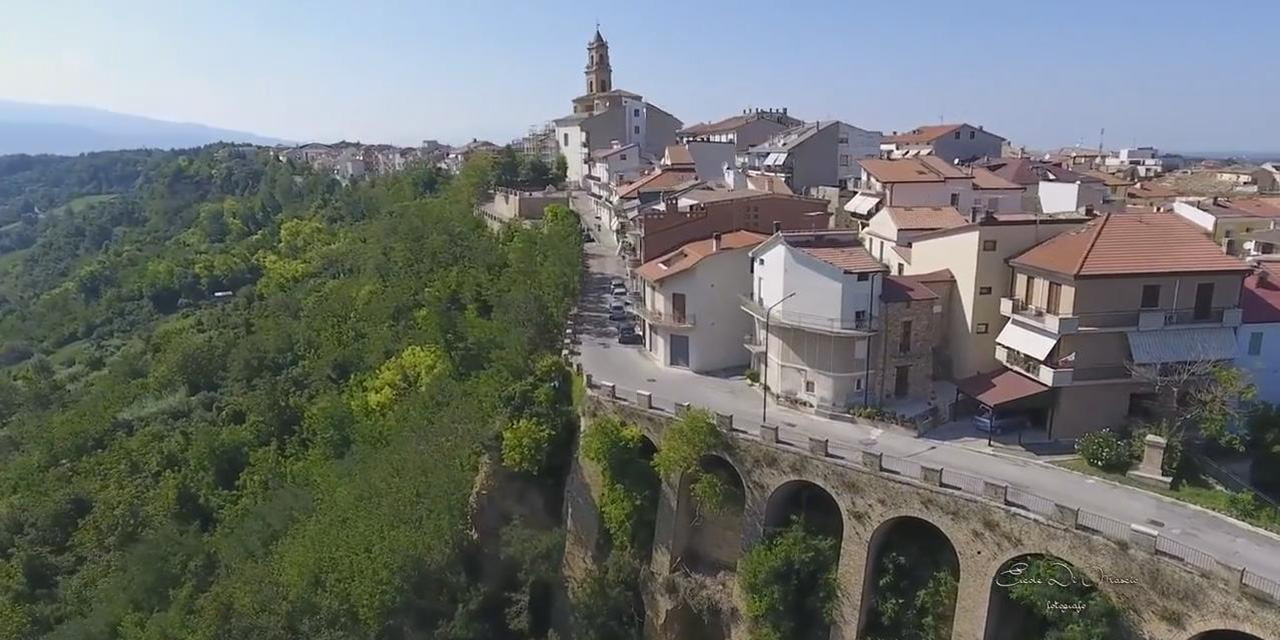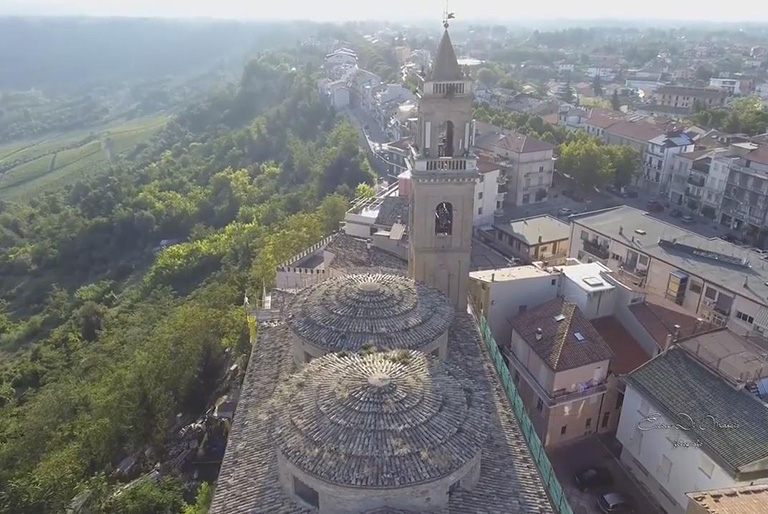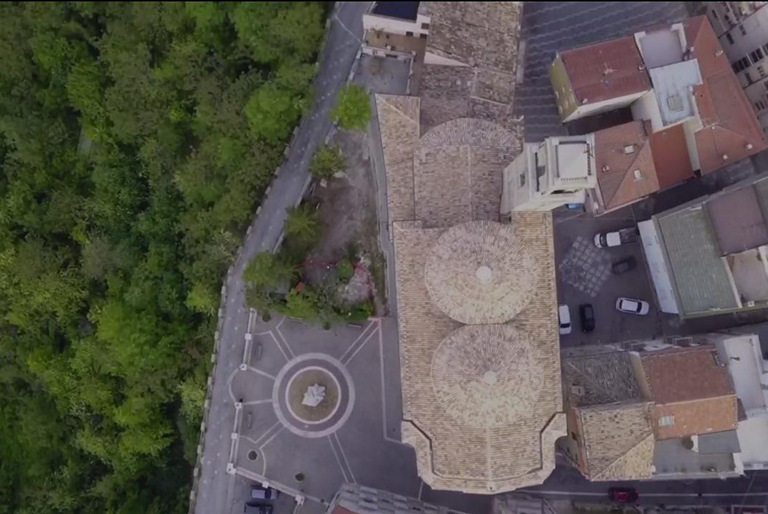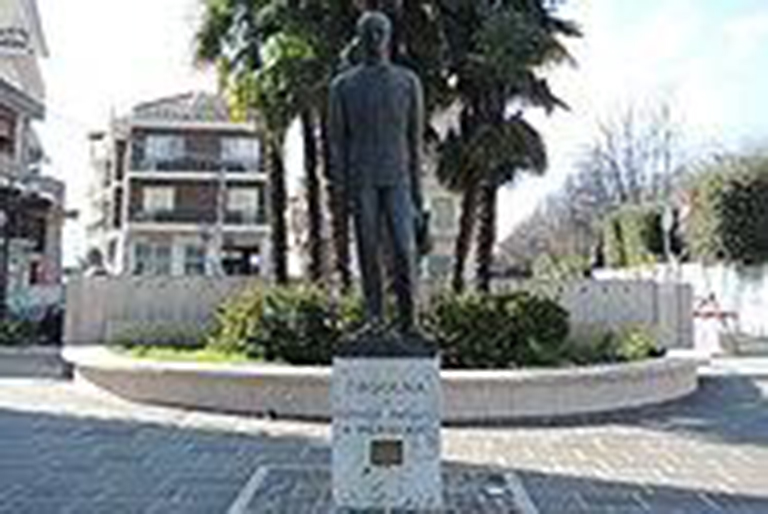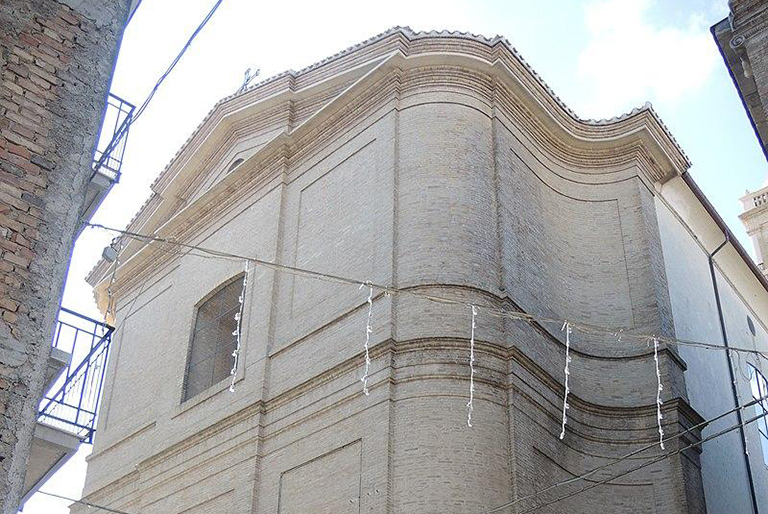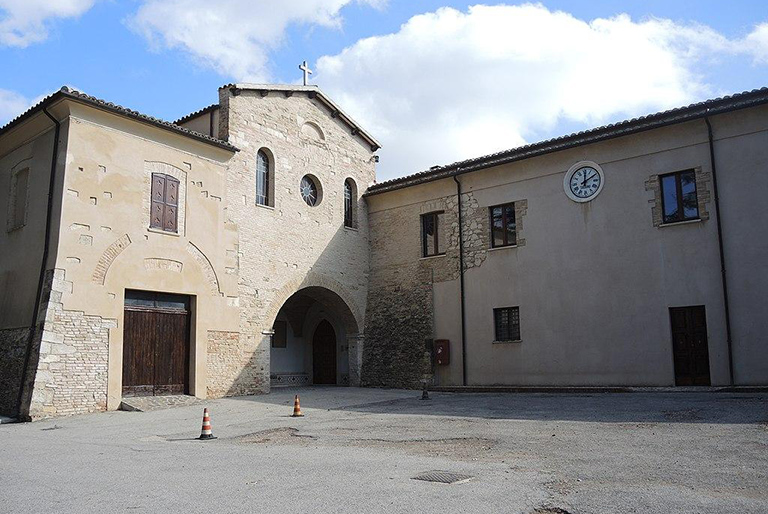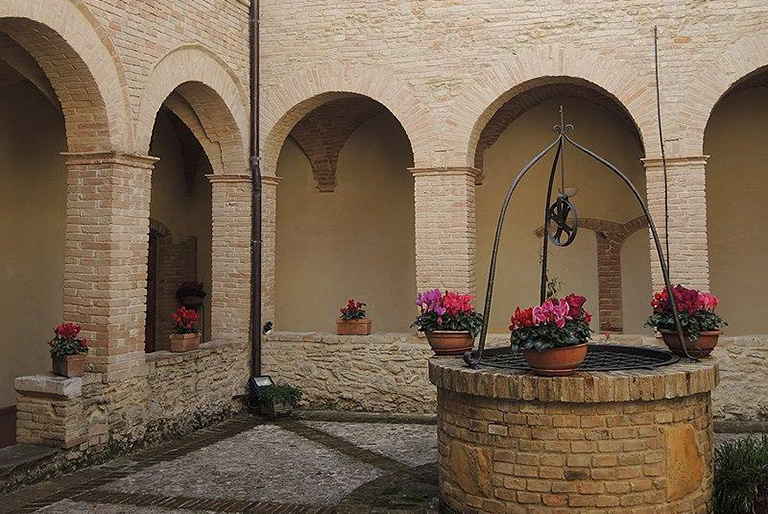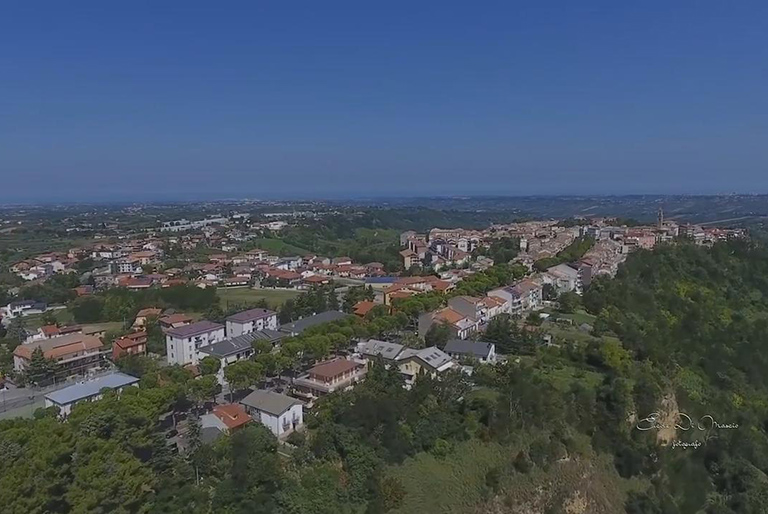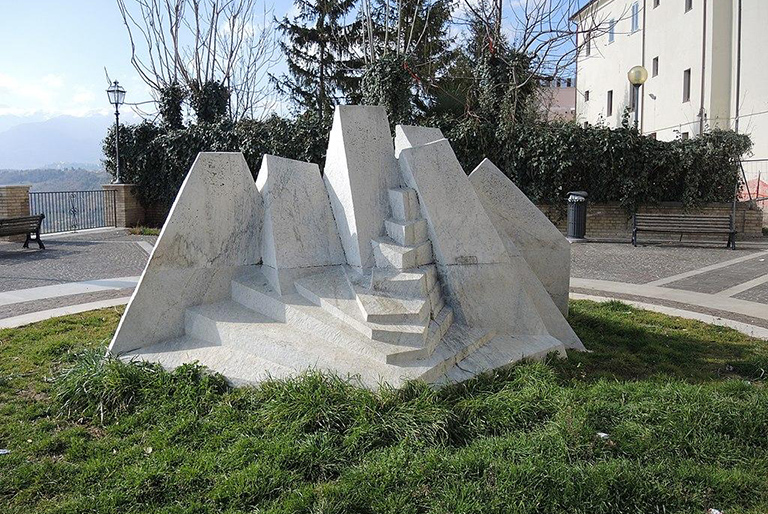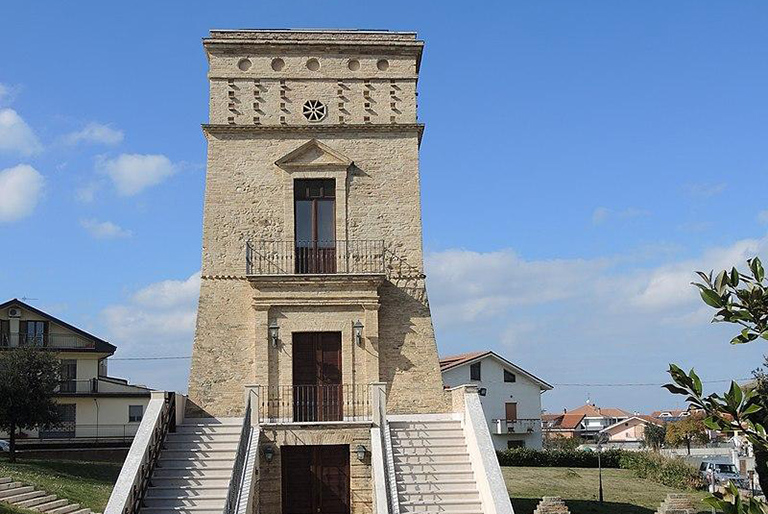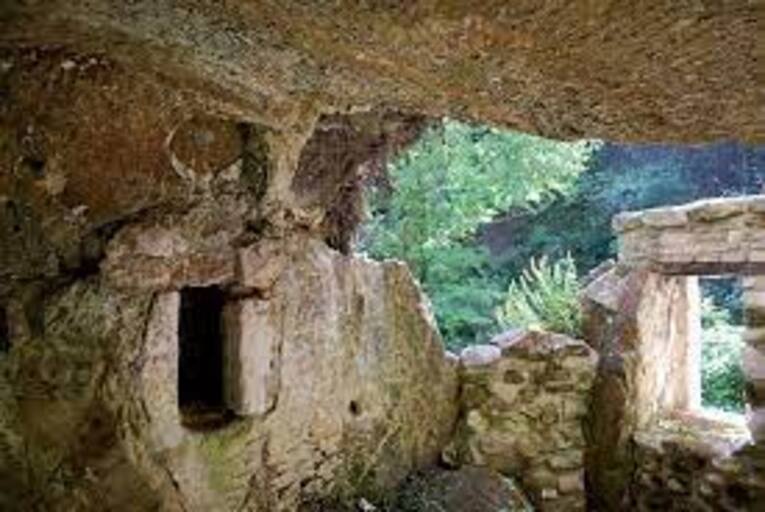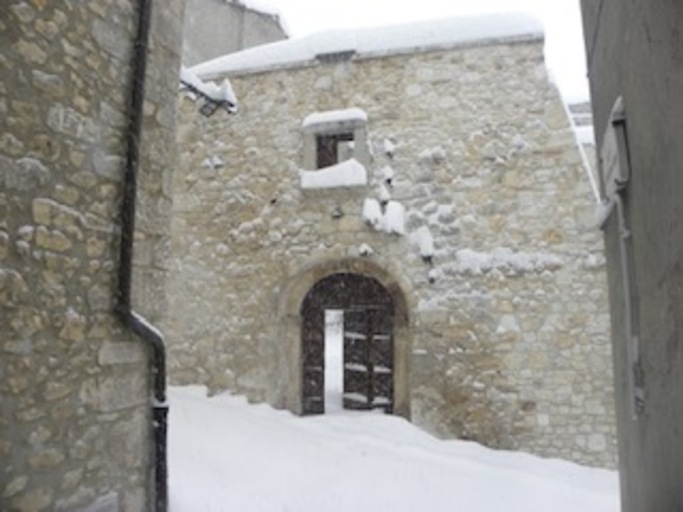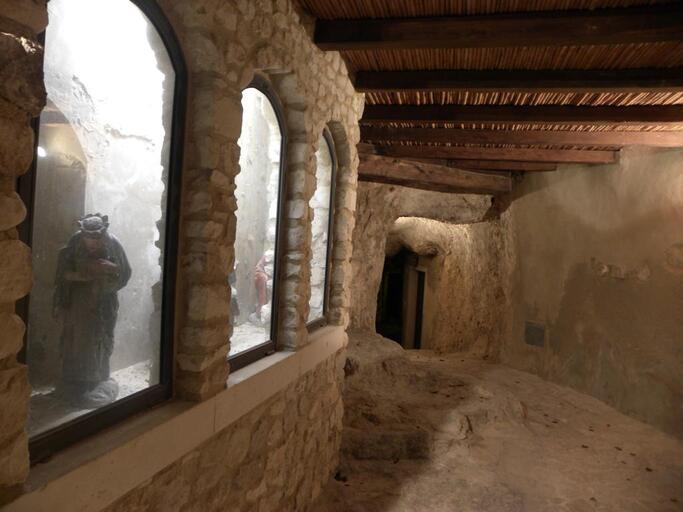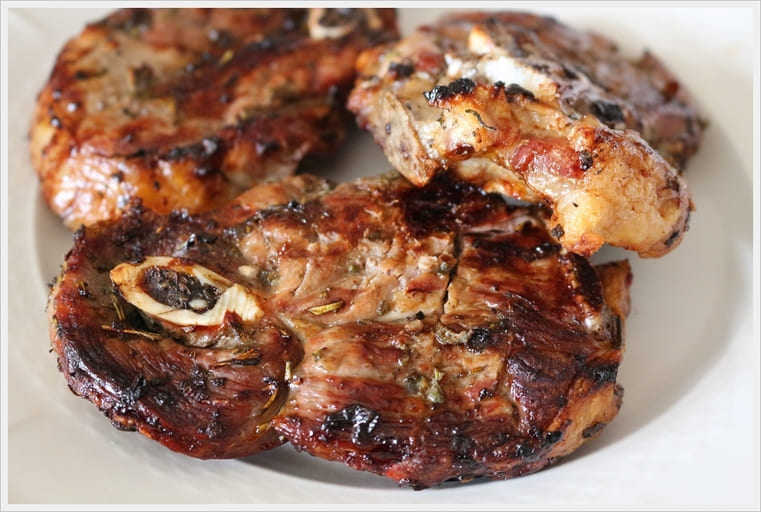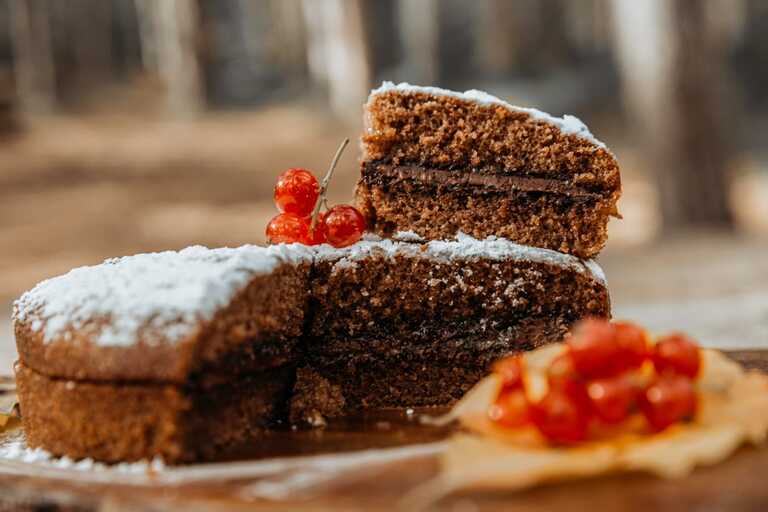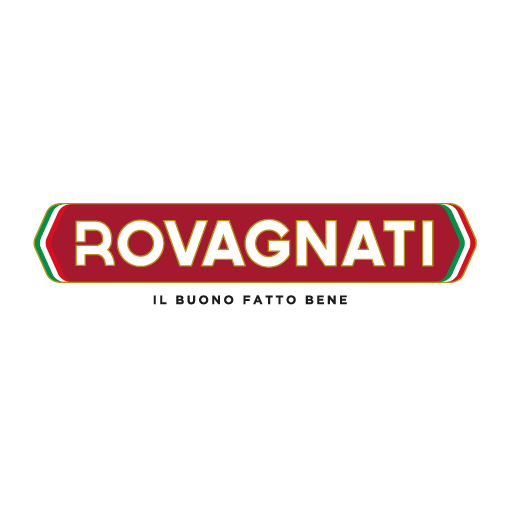profile
map
climb detail
itinerary timetable
tourist info
Host city:
ORSOGNA
Touristic information
Orsogna is a town in Central Italy, located in the Abruzzo region, in the province of Chieti. It is located on a hill, 432 meters above sea level, a few kilometers from the Majella National Park – whose mountains dominate the landscape with their beauty and majesty – and 20 kilometers from the Adriatic coast.
Its inhabitants are called the Orsognesi. The municipality covers 25.3 km² and has 3 799 inhabitants since the last population census. The population density is 150.4 inhabitants per km² on the Municipality.In the vicinity of the municipalities of Filetto, Arielli i Guardiagrele, Orsogna is located 9 km south-west of Lanciano, the largest city nearby. Located at 430 meters above sea level, the municipality of Orsogna has the following geographical coordinates 42° 13′ 12” North, 14° 16′ 48” East. The town develops around the Parish Church of San Nicola di Bari, dating back to the eighteenth century, which also preserves two ancient procession crosses by the artist and goldsmith Nicola da Guardiagrele.
Orsogna is surrounded by nature, which colors its streets green and surrounds it with vineyards and olive groves. The Municipality is a member of the Città del Vino association.
On March 26, 2003 the President of the Republic Carlo Azeglio Ciampi awarded the Municipality of Orsogna the Silver Medal for Civil Merit.
Gastronomy
At the table with the families of Orsognesi and in the restaurants and farmhouses of the place it is possible to taste the exquisite dishes of the peasant tradition, watering them with local wine.
It is impossible to synthesize the richness of the flavors, from the pasta alla chitarra “carrata” at home to the “pallotte casce e ove”, from “pizz’ e ffuje” (focaccia of corn flour and vegetables) to the “pizz’ di randigne” (corn), from the “ciammaiche al sugo” (the snails) to the “cif e ciaf” made with the pork cheek in chunks, ending with the desserts: potato crispelle, the Easter Pupa in almond paste, “li ciaunelle” (fried donuts without a hole), Christmas taralli, pizzelle.
The Orsogna Winery, located in the homonymous city in the province of Chieti, is a biological and biodynamic reality deeply rooted in the Abruzzo territory. The company stands out in the Italian wine scene not only for the commitment and passion it puts into creating its wines, but also for the attention to the environment. In fact, it has always been committed to the management of its vineyards with agricultural practices that safeguard the quality of the environment, in the belief that a quality wine can only be born from a quality soil. This certification rewards the commitment of a group of pioneer farmers at an international level of organic and biodynamic, firmly convinced that respect for the environment, its times and its rules is an essential part in the cultivation of vines to create “powerful and elegant wines, rich in savory strength and unique in character, without giving in to fashions … wines that are strongly distinguishable from others”.
The ampelographic base of the vineyards consists of Montepulciano for about 30% and the remaining part from Trebbiano d’Abruzzo, Sangiovese, Malvasia, Chardonnay and Moscato, in addition to the native vines Passerina, Cococciola and Pecorino.Oggi produces about 1,500,000 bottles a year, with important growth margins. 70% of the production is exported to 30 countries in the world including the USA, Canada, Europe, Japan and China. The first reference market is Germany, followed by the United States and the Scandinavian Peninsula.
Main Sights
Il Tratturo Centurelle-Montesecco
The Centurelle-Montesecco sheep track is a 120 km track parallel to the “Magno” tratturo L ‘Aquila Foggia which is connected to it in Caporciano at the Piana di Navelli near the church of Santa Maria dei Cintorelli, and in Montesecco, a locality in the municipality of Chieuti in the province of Foggia. This trattural branch passing further upstream with respect to the “Magno” route was probably established to make the “Magno” less congested, allowing for nourishment of the forage, which is very important for the supply of herbivores, or to make the journey safer since the the “Magno” route, passing closer to the coast, was subject to raids by the Saracens
La Torre Tratturale “Di Bene”
The “Di Bene” Tower is an ancient building built along the path of the Centurelle-Montesecco Tratturo. Built towards the end of the 16th century or the beginning of the following century, it had the functions of defense and control of the Tratturo. In the nineteenth century it was acquired by the “Di Bene” family who took care of a first restoration. It became a meeting place for many Abruzzo artists including Gabriele D’Annunzio and Francesco Paolo Michetti. The Francavillian painter and photographer in the surroundings of the Tower set the mountain landscape of the Maiella of the famous painting “the daughter of Jorio”. Picture that was a source of inspiration and comparison in the famous literary work of the same name by D’Annunzio himself. From the Second World War the Tower fell into disrepair but was later acquired by the Municipality of Orsogna which subjected it to an impressive restoration in 1994. Now it is the seat of cultural activities.
Attrazioni turistico culturali presenti nella Torre Di Bene
Piano terra – Museo Modesto Parlatore
14 works by the very important sculptor from Orsogna who loved his homeland so much that he donated them to the De Meis Library in Chieti. Later they were brought back to Orsogna to make a museum
Primo Piano- Biblioteca Nazionale Città del Vino
About 4000 volumes that are part of the rich book heritage of the Wine Cities; works dedicated to wine and its world, but also guides, essays, technical texts, economics and agriculture, history of wine both on a global, national and local level, of publications published by individual municipal administrations and which are not part of the traditional bookstore
BLOCKHAUS
Touristic Information
Pretoro, like a lovely crib, is perched on the northeastern slopes of Maiella with a unique appearance, thanks to its stone houses huddled against each other so that they seem “perched” on the steep side of the mountain. Because of its medieval origins, the ancient town centre is characterized by narrow alleys which stop to make way to the suggestive and typical small squares, and by steep stairs that climb up to the highest point of the small village, that is the “Castle”, which offers a wonderful panorama over the surrounding area. Pretoro has kept a typical medieval urban structure, clustered around its highest point where once stood the castle (but nowadays little of it has remained) and radially following the contour lines and steep shape of the rocky terrain. This small village, at around 600 metres above sea level, still preserves all its charm and deserves to be visited slowly, street by street, staircase to staircase, with its romantic and sometimes decadent views, which makes it one of the most evocative places in Abruzzo.
Gastronomy
Among the first courses we can count the “p’ttolozz’” (diamond-shaped pasta made of flour and water) with sauce, once made with a mixture of white flour, cereals and spelt, and the “pasta alla chitarra” of Abruzzo, filaments obtained with a special tool, “lu maccarunar” which is used to give the fresh pasta a square cut and a porous texture that fits well with souce. The “maccarunar” are still built and used in Pretoro.The grilled lamb stands among the second courses. Typical of this dish is the cooking system: in fact, the firewood to cook the meat must be a mixture of wood, from the fir resinous, to the beech free of impurities, to the hornbeam fragrant and to finish branches of Juniper odorous. The salting and the scent must be done with aromatic herbs such as thyme, rosemary, mint, black pepper, red juniper and violet. These are the secrets of an excellent preparation of the pretorese lamb. Other dishes are the “coratella” of lamb and the “turcinelli”, made with the guts of the pig and stuffed with sweetbreads and chili. Among the vegetables we can mention the “ciabbotta”, set of vegetables to be served on slices of homemade bread, and the “pizz’ and foij”, stewed vegetables served with smoked sardine and the “pizza di randinie”, unleavened pizza made with corn flour. Traditionally the “pizza di randinie” is cooked directly on the floor of the fireplace, covered by the “coppo” (a metal lid on which the coal rests), but it will also be very good prepared in the oven or directly in the pan.
Torta del Lupo di Pretoro is a cake made with black chocolate, Montepulciano d’Abruzzo red wine, rum and gianduia. It is a dessert dedicated to Pretoro, a small town of about 850 inhabitants perched on the slopes of the Maiella. Definitely greedy cake, it has a paste generously soaked in rum and an adequate filling of gianduia chocolate.
La Torta del Lupo…di Pretoro è un dolce a base di cioccolato nero, vino rosso Montepulciano d’Abruzzo e Gianduia. Dolce dedicato a Pretoro, piccolo paese di 850 abitanti circa abbarbicato alle pendici della Maiella. Torta decisamente golosa, ha una pasta generosamente imbevuta di rum ed una adeguata farcitura di cioccolato gianduia.
Beverages
The nose recalls the typical scent of the Pecorino grape, and in the mounth it shows the slight acidity always characteristic of the grape, but well balanced with delicate and very fruity hops, a straw yellow colour, compact and persistent white foam.
This beer is dedicated to the people of Abruzzo. To its landscapes and its products. A new line called “The table of the Brigands”
Main sights
The river Foro flows in the heart of the Maiella National Park and cut through the province of Chieti from Asinara to the Adriatic sea: along its banks, in the river Foro’s Valley, it is possible to notice some ancient mills. In the past, this river represented the unique source of energy and the presence of these mills was the only opportunity for the inhabitants to grind grain and produce different types of flour. To build a mill, it was necessary to comply with some strict laws, and this is the reason why Pretoro, over some centuries, was the protagonist in several legal disputes concerning the ownership of these mills. After the first references to the presence of mills along the river Foro, dating back to the administration by the Benedictine monks of San Salvatore a Maiella.


